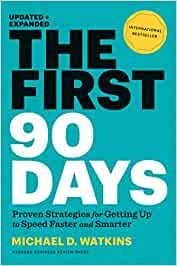The First 90 Days

One of the concerns we have in a new job is how long it might take to fulfill the expectations of the company. We try to work hard, learn fast, be disciplined to be rapidly recognized, but are we doing it right? That’s a Harvard Business Review book, considered an international bestseller and improved from its original release in 2003.
I have to agree this book is valuable and useful, but it is extremely boring to read. I had a hard time to finish it, which was a different experience from the last 2 books. Now, I’m relieved that I have it just as a reference book, to be used when a transition actually happens.
Despite the generic title, this is a book for managers. If you aren’t going to lead a team, a unit or a company, don’t buy this book unless you want to get ready for your future boss.
Here are the top 10 lessons learned from the book:
-
My goal in my next transition is to get as rapidly as possible to the break-even point, which is the point at which I have contributed as much value to my new organization as I have consumed from it.
-
Success in the new role requires me to stop doing some things and to embrace new competencies.
-
The complexity and ambiguity of the issues I’m dealing with increase every time I get promoted. The decision making game becomes much more bruising and politically charged the higher up you go.
-
Joining a new company is like an organ transplant. As a new organ, if I’m not thoughtful in adapting to the new situation, I could end up being rejected by the organizational immune system.
-
If I score high on technical interests and low on cultural or political interests, I might be at risk of overlooking the human side of the organizational equation.
-
It is essential to figure out what I need to know about my new organization and then do learn it as rapidly as I can. The more efficiently and effectively I learn, the more quickly I will close my window of vulnerability.
-
The faster I climb the learning curve, the earlier I can begin to make good business decisions.
-
Mission is about what will be achieved, vision is about why people should feel motivated to perform at a high level, and strategy is about how resources should be allocated and decisions made to accomplish the mission.
-
Process analysis stimulates collective learning. It helps the entire group understand exactly who does what, within and between units or groups, to carry out a particular process. Creating a process map also sheds light on how best to improve the process.
-
The best onboarding system can’t compensate from the sins of poor recruiting. If the company hires people who aren’t likely to fit with the culture, then little can be done to reduce the risk of derailment through onboarding.
In conclusion, I found the book conservative, a bit outdated in relation to recent advances in organizational culture and practices (have you read the book Rework ?). I also found it too cold, like the human side of the manager was not there, because it gave the impression that downsizing a team was actually a simple decision to make. But the bad parts don’t diminish the good ones.